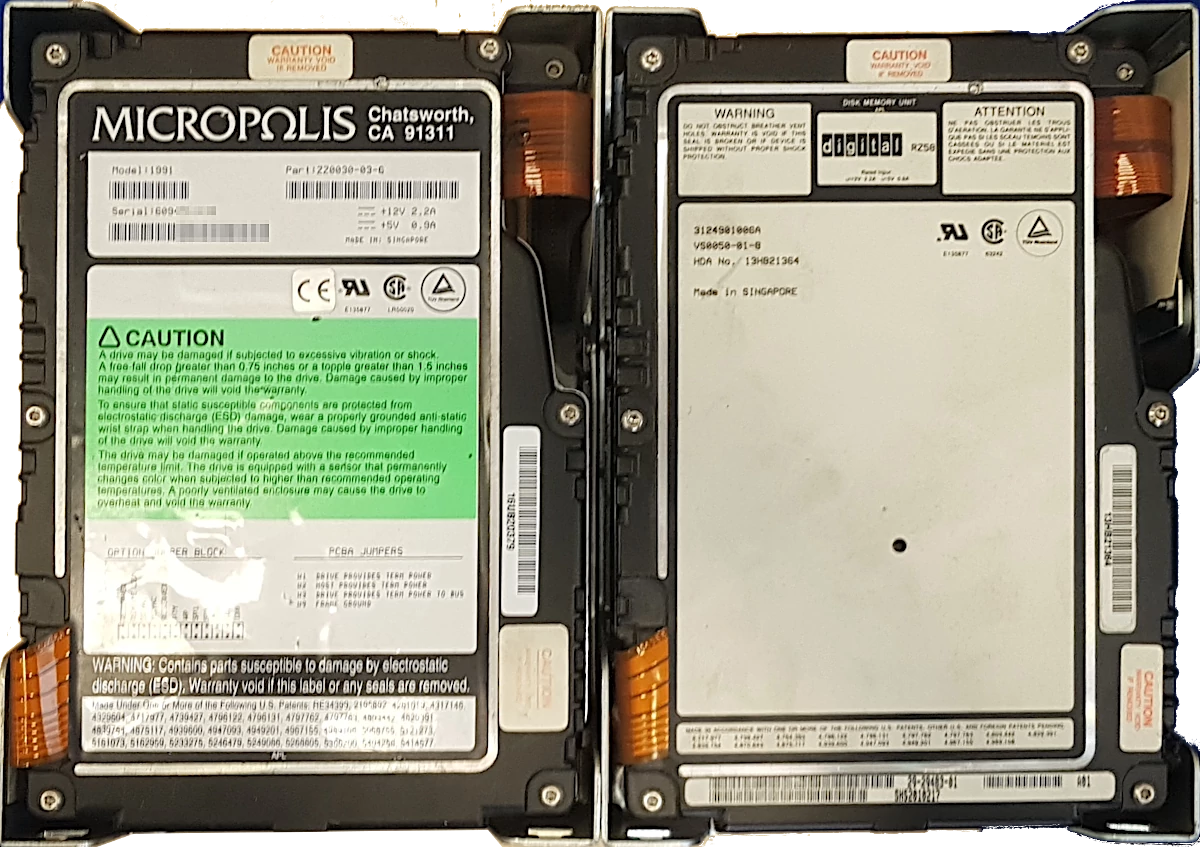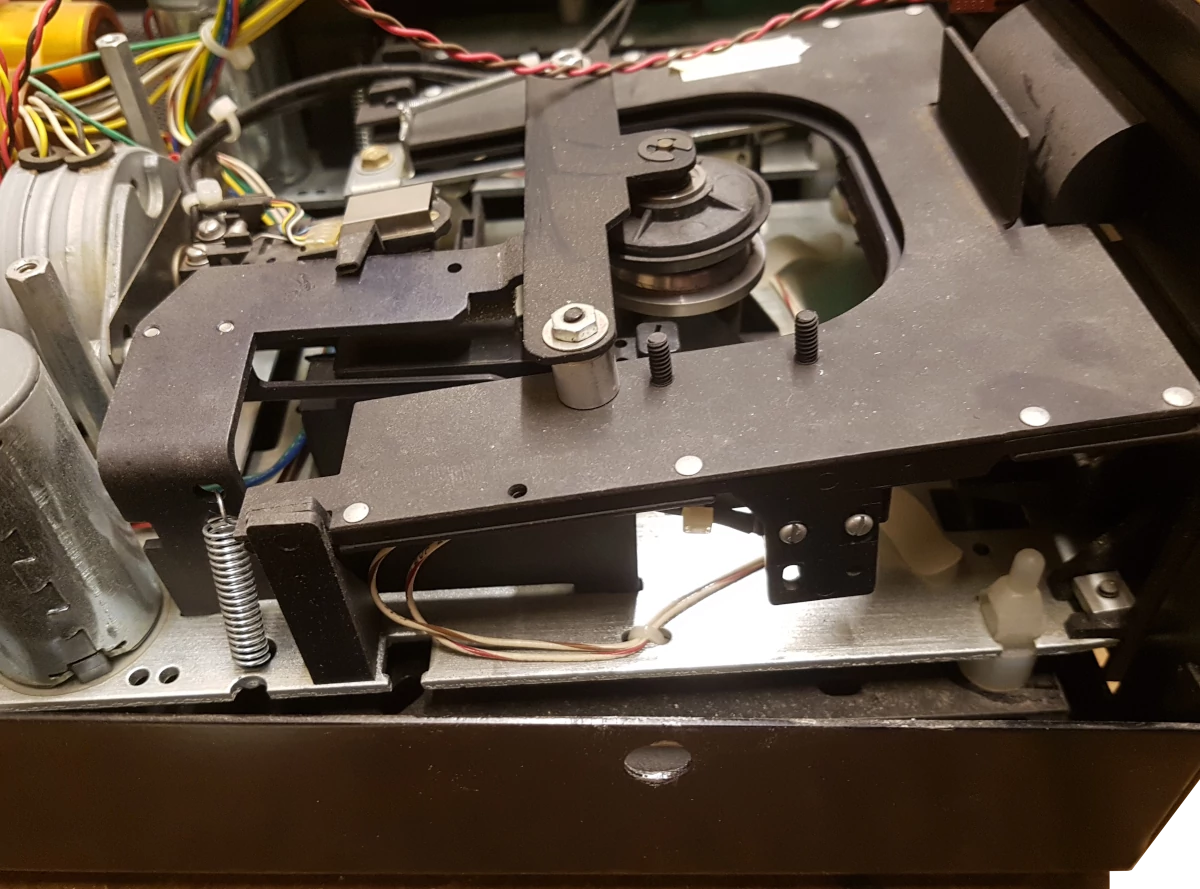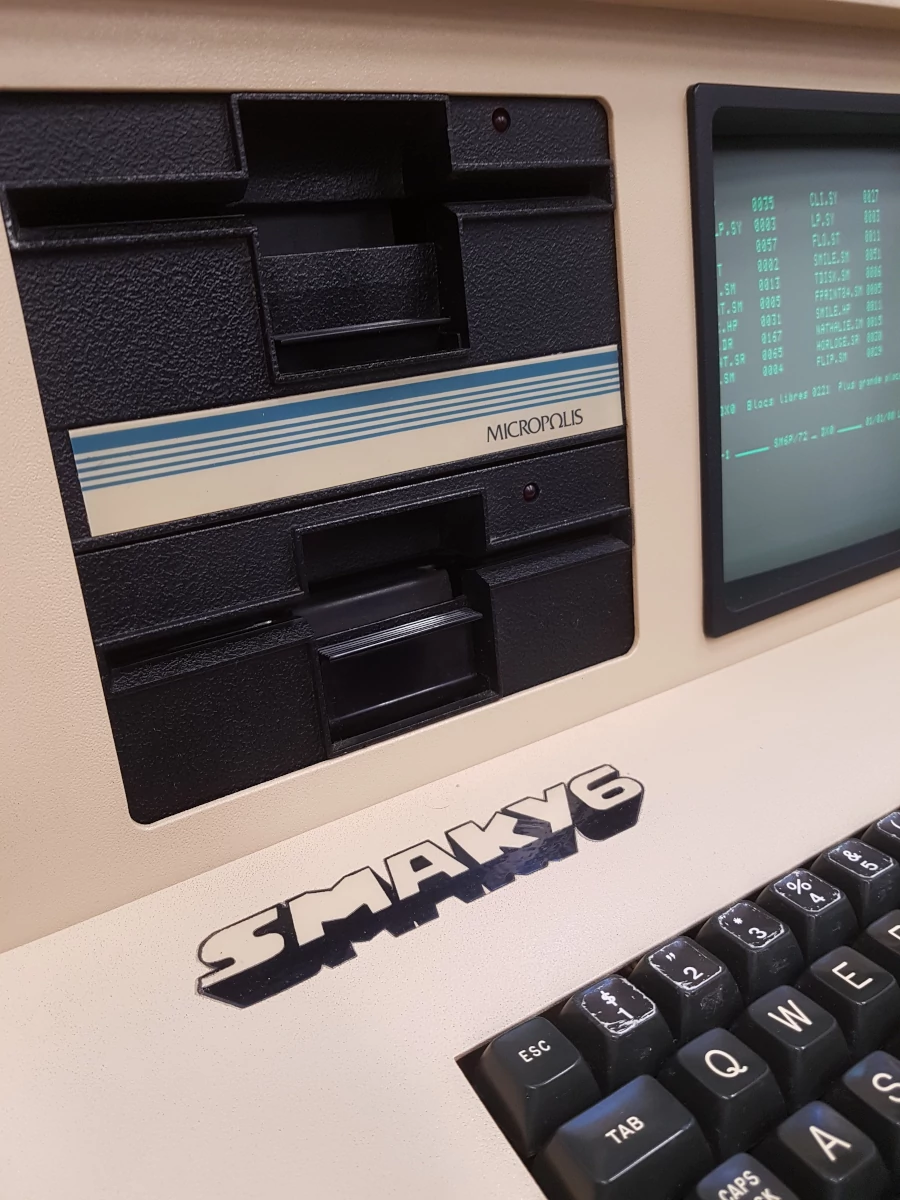Legacy OEM products
Hard-drives and floppy-drives manufactured by Micropolis were in large parts sold as original equipment
manufacturer (OEM) parts, as components marketed by another manufacturer as part of their systems and
sometimes even labeled with their brand (white labeled or private labeled).
Digital Equipment Corporation (DEC) used the Micropolis 1325 and 1598 hard-drives in their PDP11/10 VAX machines. The Micropolis 1325, marketed as DEC RD53, is recognizable as a Micropolis drive, but Micropolis 1598 drive marketed as DEC RZ57 / RZ57-E are relabeled with DEC singatures even on the drive package. Only via technical design and chipsets used the drive can be identified as a Micropolis. Similarly, Micropolis model 1991 was sold OEM as DEC RZ58 (part no. VS0050-01-8).

Micropolis dual-drive subsystems 1043-II and 1053-II respectively were at one point sold as Exidy Dual Disk. The usually blue and white "horizon lines" stickers on the front bezel are then stickered over with an all black tape with the Exidy logo on left and a stylized "Dual Disk" label on the right. The metal body which is blue on Micropolis models is painted white for Exidy branded units. Also, the usual blue drive latch on double sided drives was black in OEM applications.
The Commodore 8050 uses two single-sided drives, whereas the 8250 uses double-sided drives. Both variants write on 5.25-Inch Double Density floppy media with the Micropolis typical track spacing of 100 tracks-per-inch, resulting in a total of 77 logical tracks (aka cylinders) per side. Data is written to disk in a Commodore-variant of group coded recording, with soft sectoring and zone bit recording for optimised bit density across the entire disk. Both, the 8050 and 8250, can't write to High Density disks, as the read/write heads aren't able to produce the 600 oersted magnetic field required for HD floppies.

Commodore used 4 different drive assemblies OEM in the dual disk drive models 8050 and 8250. The various suppliers are listed below, along with the respective PCS assemblies used in these units:
"Smaky" was short for "Smart Keyboard". The Smaky 6 was developed at the EPFL in Lausanne by Jean-Daniel Nicoud and Alain Capt. It was based on the Zilog Z80 CPU and came to market in the late 1970s. The machine also used a custom version of Micropolis MDOS named SAMOS.

Digital Equipment Corporation (DEC) used the Micropolis 1325 and 1598 hard-drives in their PDP11/10 VAX machines. The Micropolis 1325, marketed as DEC RD53, is recognizable as a Micropolis drive, but Micropolis 1598 drive marketed as DEC RZ57 / RZ57-E are relabeled with DEC singatures even on the drive package. Only via technical design and chipsets used the drive can be identified as a Micropolis. Similarly, Micropolis model 1991 was sold OEM as DEC RZ58 (part no. VS0050-01-8).

Micropolis dual-drive subsystems 1043-II and 1053-II respectively were at one point sold as Exidy Dual Disk. The usually blue and white "horizon lines" stickers on the front bezel are then stickered over with an all black tape with the Exidy logo on left and a stylized "Dual Disk" label on the right. The metal body which is blue on Micropolis models is painted white for Exidy branded units. Also, the usual blue drive latch on double sided drives was black in OEM applications.
Commodore 8050
Commodore International of Commodore C64 fame used Micropolis floppy disk drive mechanisms in its early personal computer storage subsystems. The Commodore 8050 was a deskside dual-drive 5.25-inch floppy disk system. There was a variant called the Commodore 8250 which had two read/write heads per drive, so that either side of the magnetic disk could be used without ejecting and flipping the floppy-disk manually. Commodore further used customized controller boards supplied by Micropolis, the Micropolis #8050005 and refreshed #8050006 analog controller PCB. Schematic layouts are illustrated here, here, here and here. Data on disk was Group coded (GCR). Earlier models used the Micropolis 1006 II (single sided) and 1006-IV (double sided) drive mechanics, while later models used the revised and improved 1106 II (single sided) and 1106 IV (double sided) drives nicknamed "Micropolis Safari" drives. Earlier drive mechanics have a black chassis, later ones a silver aluminum chassis. From the outside, the older 1006 drives can usually be identified by the "active"-LED in the upper right corner of the front bezel, while 1106 Safari drives' LEDs are in the lower left. 1006 Micropolis drives also feature a "ridged" thumb lever. Refer to the 1015/1016-series notes for more drive details. Note that regarding the placement of the "activity"-LED, MPI drive mechanics also have the LED in the lower-left of the front bezel. This German site has some pictures of the subsystem and closeups of the drives (also of Model 8050). More pictures here.The Commodore 8050 uses two single-sided drives, whereas the 8250 uses double-sided drives. Both variants write on 5.25-Inch Double Density floppy media with the Micropolis typical track spacing of 100 tracks-per-inch, resulting in a total of 77 logical tracks (aka cylinders) per side. Data is written to disk in a Commodore-variant of group coded recording, with soft sectoring and zone bit recording for optimised bit density across the entire disk. Both, the 8050 and 8250, can't write to High Density disks, as the read/write heads aren't able to produce the 600 oersted magnetic field required for HD floppies.

Commodore used 4 different drive assemblies OEM in the dual disk drive models 8050 and 8250. The various suppliers are listed below, along with the respective PCS assemblies used in these units:
TYPE CBM Model DRIVE No. ANALOG # DIGITAL #
Micropolis 8050 8050031-01 8050006-01 8050002-01
8250023-02
8250 8250016-01 8250023-01 8050002-04
Micropolis Safari 8050 8250039-01 8250023-02 8050002-04
8250 8250039-02 8250023-01 8050002-04
Tandon 8050 8050047-01 8050044-01 8050002-02
8250 8250015-01 8050044-01 8050002-03
MPI 8050 8050059-01/02 8250023-03 8050002-05
8250 8250029-01/02 8250023-03 8050002-06
Please note that the analog boards vary with the drive assembly but the digital board is
the same PCB with ROM, CONTROLLER and JUMPER changes.
DOS/CONTROLLER ROMS FOR DIGITAL PCB #8050002
DESCRIPTION PCB PART NO. DOS CONTROLLER ROMS
UL1 UH1 UK3
Micropolis 8050002-01 901482-07 901482-06 901483-03
Tandon 8050002-02 901482-07 901482-06 901483-04
Tandon **8050002-03 901887-01 901888-01 901884-01
Micropolis **8050002-04 901887-01 901888-01 901885-04
MPI 8050 8050002-05 901887-01 901888-01 901869-01
MPI 8250 8050002-06 901887-01 901888-01 901869-01
Note on PCBs marked with "**": PCB part numbers 8050002-03 and -04 were stocked by
Commodore with the appropriate jumpers for use in an 8250 - note that when installing new
old stock. Before installing in an 8050, remove the two jumpers and refer to the
8050 manual p. 23.
Vector Graphic MZ
During the late 1970s, Micropolis had a close relationship with early computer manufacturer Vector Graphic, Inc. At the time, Vector introduced a Zilog Z80 based system, the "MZ". In a co-operation Micropolis supplied floppy disk drives and controller hardware for the new "Vector MZ" computer. The MZ computer could be operated either with Micropolis' own Micropolis MDOS and its tool set or with Vector's Micropolis MZOS operating system that allowed users to migrate data written with older Vector systems.Burotic Smaky 6
Early Suisse educational home computer Smaky 6 uses two Micropolis 5.25-inch floppy drives model 1015-II. Single Sided (one rw-head), Double Density media writing 77 track (100TPI track density), a tpi density Micropolis drives of the time commonly used."Smaky" was short for "Smart Keyboard". The Smaky 6 was developed at the EPFL in Lausanne by Jean-Daniel Nicoud and Alain Capt. It was based on the Zilog Z80 CPU and came to market in the late 1970s. The machine also used a custom version of Micropolis MDOS named SAMOS.
